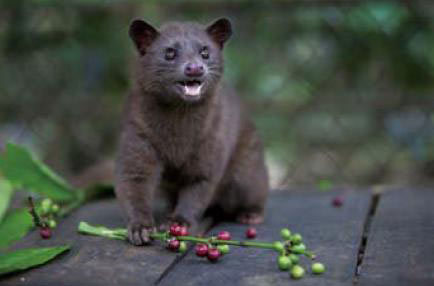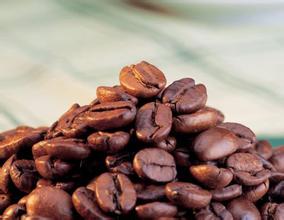The Development History of Fine Coffee Java Coffee
Indonesia has always been one of the best coffee producers in the world, once Java coffee is synonymous with top coffee, and Sumatra and Sulawesi also produce top coffee. Coffee arrived in Indonesia very early and was brought in by the Dutch in the 17th century, when Ceylon, today's Sri Lanka, began to grow coffee because of the Dutch. At that time, Arabica coffee was grown in Indonesia and Sri Lanka.

Europeans at the time fought for Indonesian coffee, especially Java coffee, which tasted less bitter. Coffee with very low acidity has been described as follows: "Good Java coffee has the property that it exhibits a relatively dense, slightly lighter, and less acidic appearance than some other Indonesian coffees. The coffee as a whole shows rustic style and a long aftertaste, with slight hints of vegetarianism in the finish. Compared to other Indonesian coffees, the aftertaste is not as long, but often contains a slight mixture of spicy and smoky notes. Java coffee on the whole gives the impression of a sweet aroma, very soft and rich." I don't know what Java coffee tasted like in its heyday, but reading it makes my heart race.
This divine coffee was then supplied only to Europe, and had to undergo long voyages on sailing ships, which made it less acidic and better tasting. In the more developed shipping period, merchants had to store coffee for years to obtain better taste, and storage brought higher prices. By the 1880s, Java coffee reached its peak, but the delicate Arabica coffee plants could not escape the plague. A rust disease hit many areas in Java, including Java. Large areas of coffee trees died. At that time, only one tenth of Arabica coffee survived in Indonesia, mostly in Sumatra. The Dutch then brought Africa's stronger Robusta coffee, which was more resistant to pests and diseases but less flavorful than Arabica coffee, and the halo finally left Java.
The old plantations that survive to this day are now clustered in eastern Java, including Djampit, Blawan, Pancoer, and Kayumas, four plantations that you can visit, all near the Ijen volcano on the Ijen plateau, where the same coffee has been grown since the 18th century. But Java is not Java anymore, and when people talk about Indonesian coffee, they talk more about Sumatra mantinen coffee or, more miraculously, Kopi Luwak coffee, also known as civet coffee. Luwak coffee is known as the world's most expensive coffee, mainly produced in Indonesia's Sumatra, Java and other islands, but unusually rare, civets will swallow coffee fruit, after "sad intestines hundred turns", unexpectedly will dissolve most of the bitterness, leaving more delicious coffee.

This coffee was discovered because local workers were forbidden to drink coffee by the stingy Dutch planters at that time. In order to obtain this magical fruit that they had worked hard to grow, they had to find it in the excrement of civet cats. After washing and grinding, they made it into world-class coffee, which was then discovered by the Dutch and became more expensive. Bali, Indonesia's main tourist destination, is often famous for its golden coffee in tourist brochures. In fact, this is the special selection of Indonesian Mandheling coffee, also known as Golden Mandheling. Sumatra, probably free of disease, produces one of the finest coffees in the world, smooth and mellow, heavier in taste and slightly longer in aftertaste than Java, perhaps less delicate than Java, but more ferocious. Buy can recognize the golden butterfly trademark.
There are also plantations in Bali that have been turned into resorts, such as Munduk Moding Plantation, which has been turned into a luxury resort with spa. The resort is close to Bali Central Lake and Munduk Mountain Station, the nearby hills are covered with forests, coffee trees and rice, with charming surroundings and rooms with local characteristics. In fact, Bali's greatest charm compared with other islands lies in its unique culture. Living in the mountains and enjoying Indonesian coffee culture is also a good choice.

Important Notice :
前街咖啡 FrontStreet Coffee has moved to new addredd:
FrontStreet Coffee Address: 315,Donghua East Road,GuangZhou
Tel:020 38364473
- Prev

Costa Rican Coffee World Coffee Tour Costa Rican Coffee News
Costa Rican coffee was introduced by Cuba in 1729. Costa Rican coffee cultivation now has the most complete government assistance system in the world. Although Costa Rica is the second largest banana exporter in the world, coffee is the second major crop in the country's agriculture. Coffee obviously brings more benefits than bananas. Costa Rica is in geography.
- Next

Fine coffee details introduce the latest information and market pay attention to the current coffee industry in Yunnan
Coffee is a short-day plant. Coffee has the characteristics of multiple flowering and concentrated florescence. The florescence of small seed coffee in Yunnan is from February to July, and the flowering period is from March to May. The flowering of coffee is greatly affected by climate, especially rainfall and temperature. Coffee flowers have a short life span of only 2-3 days. Small seed coffee usually opens at 3: 5 in the morning and blooms from 5 to 7 o'clock. Yunnan small grain coffee, Rubia officinalis
Related
- Detailed explanation of Jadeite planting Land in Panamanian Jadeite Manor introduction to the grading system of Jadeite competitive bidding, Red bid, Green bid and Rose Summer
- Story of Coffee planting in Brenka region of Costa Rica Stonehenge Manor anaerobic heavy honey treatment of flavor mouth
- What's on the barrel of Blue Mountain Coffee beans?
- Can American coffee also pull flowers? How to use hot American style to pull out a good-looking pattern?
- Can you make a cold extract with coffee beans? What is the right proportion for cold-extracted coffee formula?
- Indonesian PWN Gold Mandrine Coffee Origin Features Flavor How to Chong? Mandolin coffee is American.
- A brief introduction to the flavor characteristics of Brazilian yellow bourbon coffee beans
- What is the effect of different water quality on the flavor of cold-extracted coffee? What kind of water is best for brewing coffee?
- Why do you think of Rose Summer whenever you mention Panamanian coffee?
- Introduction to the characteristics of authentic blue mountain coffee bean producing areas? What is the CIB Coffee Authority in Jamaica?

